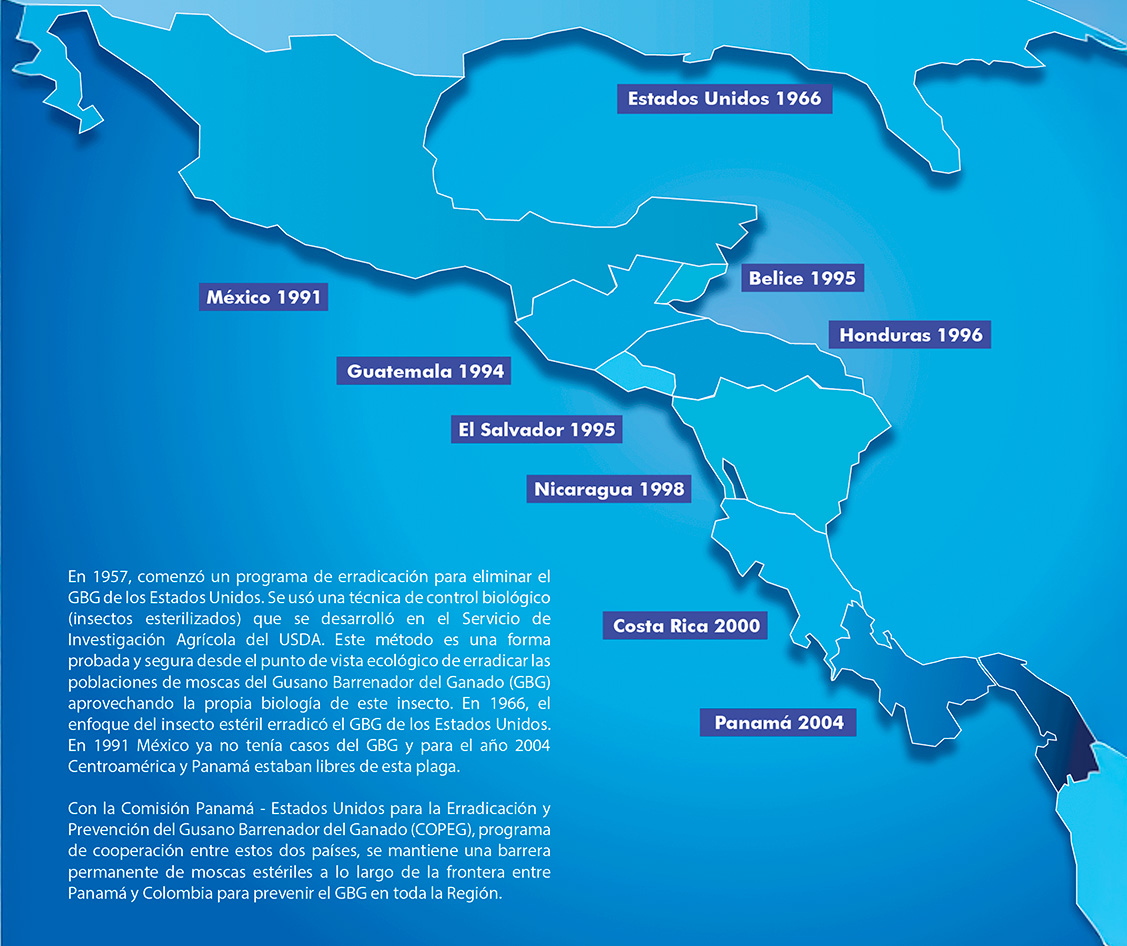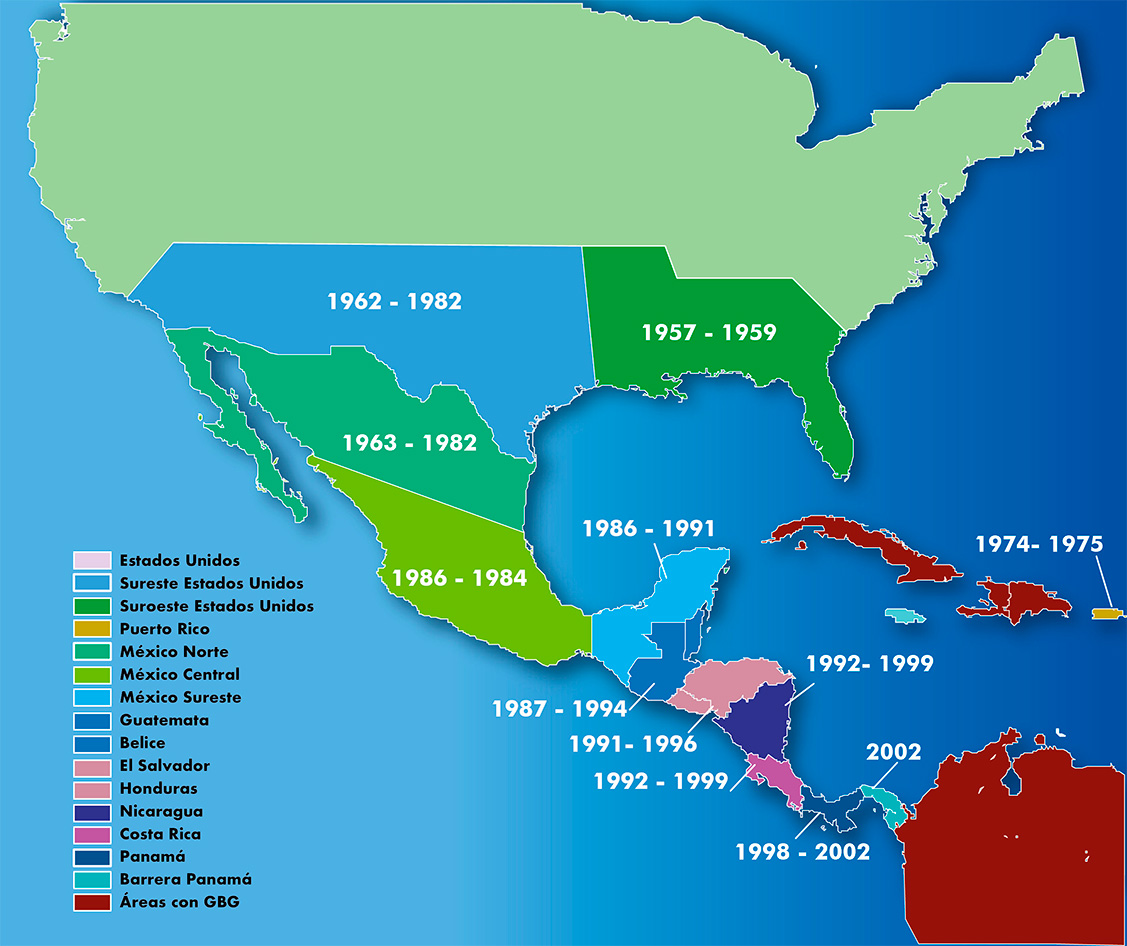COPEG
The Panama–United States Commission for the Eradication and Prevention of Screwworm Infestation in Livestock (COPEG)
1966
The origins of the Screwworm Eradication Program date back to the 1950s in the southern United States, in response to livestock producers’ need to reduce the constant losses caused by the screwworm. After years of effort, the country was declared free of the pest in 1966, and the first biological barrier was established along the border with Mexico.
1994
This plan continued to expand throughout Central America, and in 1994, the agreement was signed to establish the Panama–United States Commission for the Eradication and Prevention of Screwworm Infestation in Livestock (COPEG). The eradication efforts officially began in 1998.
2006
By 2006, Panama was declared free of screwworm, with the exception of the Darién Province. It became the final permanent biological barrier, serving as the last link in a regional plan that successfully eradicated the pest from North and Central America.
2023
In January of this year, a state of emergency was declared in Panama due to a screwworm outbreak, and on July 5th, the Ministry of Agricultural Development (MIDA) officially declared a nationwide outbreak. By the end of that month, the release of sterile flies began in Costa Rica following the confirmation of its first case. In December 2023, the first case was detected in Nicaragua, prompting the start of sterile fly dispersal that same month.
2024
In September of this year, the first case was reported in Honduras, and on October 7th, sterile fly dispersal began in that territory. By the end of the month, sterile insect releases started along the borders of Guatemala and Honduras. On November 30th, dispersal operations commenced in the Katzaja region of Mexico.
2025
Sterile fly releases were suspended in the rest of Central America to concentrate efforts in Tuxtla, Mexico, with the objective of establishing a biological barrier in the Isthmus of Tehuantepec.

Map of Screwworm Eradication in Livestock

